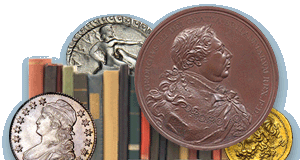
PREV ARTICLE
NEXT ARTICLE
FULL ISSUE
PREV FULL ISSUE
PAPER MONEY AS A WEAPON OF WARDick Hanscom passed along this article about the British counterfeiting of continental currency in the revolutionary war. Eric Newman's work on the topic is quoted. Thanks. -Editor
The bodies from the battle on Boston's Bunker Hill were buried just days earlier when the Second Continental Congress authorized the printing of paper money. What began with a modest batch of six million in continental dollars turned into a blizzard of several hundred million by the war's end, yielding a steady depreciation and giving rise to the famous phrase "not worth a continental." With nothing to back the money but murky promises to redeem it in precious metal at a future date, Congress didn't need any help to make it worthless, but the British were happy to assist, nonetheless. "Efforts in war or peacetime to undermine the economies, societies, and governments of adversaries by falsifying their money," wrote John Cooley in his 2008 book Currency Wars, "have proliferated since ancient times." In the 1770s, the British adopted the ruination of the enemy's money as a potent instrument of war. HMS Phoenix was a frigate, a fifth-rate vessel and among the smallest in London's fleet. Built in 1759, she carried a mere 44 guns. As part of a flotilla, she bombarded New York City in mid-July 1776 before anchoring off Staten Island. By January 1776, Phoenix had begun counterfeiting continental dollars (mostly 30-dollar bills) and smuggling them onshore to help accelerate the devaluing of the new paper money. Think of it as a miniature Federal Reserve on the sea. Benjamin Franklin later wrote that the British plan for the American paper currency was to deprive us of its use by depreciating it; and the most effectual means they could contrive was to counterfeit it. The artists they employed performed so well, that immense quantities of these counterfeits, which issued from the British government in New York, were circulated among the inhabitants of all the States, before the fraud was detected. This operated considerably in depreciating the whole mass, first, by the vast additional quantity, and next by the uncertainty in distinguishing the true from the false; and the depreciation was a loss to all and the ruin of many. For a year and a half, Phoenix belched out huge quantities of paper money. American forces frequently captured individuals involved in distributing the British counterfeits, especially in the New York area. The British conducted similar inflationary activities from printing presses on land as well, and they counterfeited both continental dollars and local paper money issued by states. "The speed with which prices rose and paper money became unacceptable," Newman writes, "was materially stimulated by British counterfeiting activity."
To read the complete article, see:
Wayne Homren, Editor The Numismatic Bibliomania Society is a non-profit organization promoting numismatic literature. See our web site at coinbooks.org. To submit items for publication in The E-Sylum, write to the Editor at this address: whomren@gmail.com To subscribe go to: Subscribe All Rights Reserved. NBS Home Page Contact the NBS webmaster 
|
